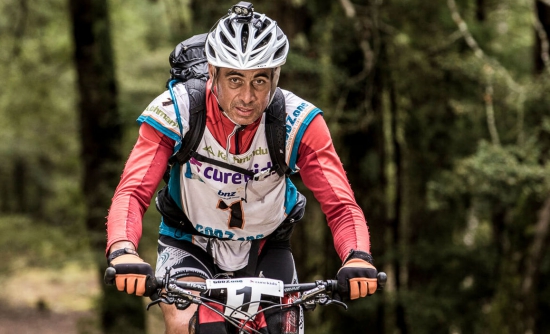GODZone - What’s The Plan? Fitness and Timing (Part One)
Nathan Fa'avae / 27.04.2020

World Champion Adventure Racer Nathan Fa’avae wrote this detailed blog giving advice on Adventure Race training for GODZone when it was set for its original date in November 2020. The race has now been moved back to March 2021, but it’s still relevant for the race, most of it for any expedition race and as it covers his approach to many aspects of adventure racing (which he is pretty good at) we’ve split it into a series of articles.
Over the past few months I have had a number of GODZone entrants and teams approach me for advice or coaching. I said to them that it’s too soon to be looking at training and coaching but that I’d write a ‘blog’ and share it publicly, then closer to the event if they wanted my guidance to get in touch.
So you’re doing GODZone next year. What should you be doing now, when you have time on your hands in lockdown?
The short answer is very little. While in lockdown it’s limiting to what you can do and you don’t need to do anything in terms of training anyway. Some daily activity for basic fundamental health is important, 30-60 minutes each day, walking, running, biking, whatever you can do. This is more about staying healthy than training for anything.
A 16 Week Countdown
My general rule with coaching is that I don’t design training programmes any longer than 16-weeks. This aligns to my philosophy about adventure and lifestyle. Adventure Racing is a dynamic and transitional sport. It requires flexibility and the ability to change, adapt and adjust. Having a rigid and structured training programme for a sport that is the polar opposite is an oxymoron of sorts. My experience of adventure racing is you spend most of the race walking while dealing with curve balls and limiting damage. Your ability to think fast and find solutions is key to a successful outcome.
Therefore, the person who has prepared by being an adventurer will prevail over the person who has trained with a power meter, in target heart rate zones on an indoor trainer. The essence of training is to prepare your body for what it can expect in the event, adventure racing is an outdoor event in the elements, your training needs to mirror that.
It’s important to remember that adventure racing is ultra endurance. You don’t need to peak like someone in a shorter event, like a marathon for example. For an adventure race, what is important is that you are fit, strong and healthy. Provided you plan your training and recovery that you peak near the race you’ll be just fine.
Timing is Everything
Being ultra endurance, the risk of over-training is less as you don’t need to train much in high heart rate zones. Many years ago I was a competitive mountain bike racer, I qualified for the 1996 Olympic Games. In my mountain biking days we spent much of our training in high heart rate zones, intervals, time trails and stacks of racing. It was really easy to ‘cook all your beans’ (overtrain) and timing your peak to arrive on race day was an art form. It was common to underperform as you’d get to a race without adequate recovery. I can recall a few times when I’d pre-ride a World Cup course a few days out from the main event and feel on fire, only a few days later to feel flat with dead legs come race day, or the other way around. My point is that timing was everything.
When I moved from mountain biking to multisport and then to adventure racing, it felt simple to ensure I was ready come race day. For starters the races were so much longer that you could have a bad patch and your day wasn’t necessarily over, compared to a two-hour mountain bike race. For adventure racing, you don’t need to arrive at the event with a perfectly timed peak, you just need to peak sometime during the event week and you’ll do just fine. With multisport and even furthermore with adventure racing, there are so many other components that contribute to success that physical fitness is just one of the pillars required.
6 Things To Work On
In this piece I’ll address what I think the key things are and share my thoughts on them. I wanted to focus on the top 5-things but after much internal debate, I think there are 6-things. I’ll leave training to last as that will take up the most space.
- Navigation
- Equipment
- Nutrition
- Teamwork
- Race strategy
- Training & Skills
Read part two on 'Navigation in Adventure Racing' here.
Sponsors
AVAYA, RAB, inov-8, Santa Cruz, Torpedo7, THINK Kayaks, Saltstick, Em’s Power Cookies, Absolute Wilderness Freeze Dried Meals, SUUNTO, Frontier Packrafts, BMG Toyota, Tineli, Xinix
Nathan Fa'avae is the captain of Team Avaya (formerly Team Seagate) and 6x Adventure Racing World Champion. He is also a Race Director of the Spring Challenge and Absolute Widerness Adventure races in New Zealand, and a co-owner of Absolute Wilderness Freeze Dried Foods. You can find out more about him at https://nathanfaavae.nz/




